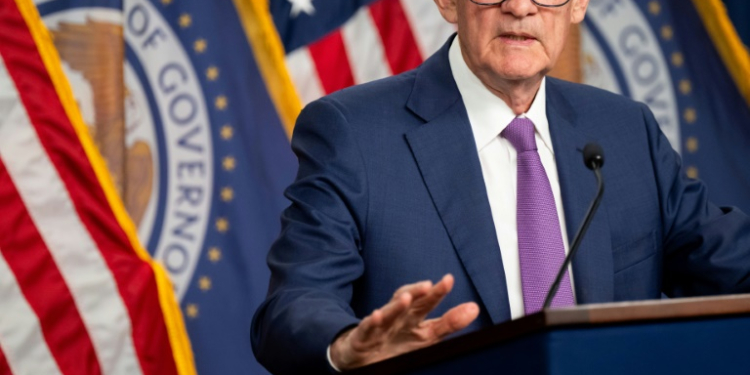Washington (AFP) – Fresh US consumer inflation data published Wednesday is unlikely to sway the Federal Reserve’s plans to leave its key lending rate unchanged, but could alter how many rate cuts policymakers pencil in for this year.
The annual consumer price index (CPI) came in at 3.3 percent in May, down 0.1 percentage point from April and unchanged on a monthly basis, the Labor Department said in a statement — slightly below expectations. “Prices are still too high, but today’s report shows welcome progress on lowering inflation,” US President Joe Biden said in a statement after the inflation data were published. The Republican Party, which is challenging the Democrats in November’s elections, took a longer-term view of inflation, writing on X that “prices have now risen by 20.1 percent since Biden took office.”
Despite the small drop last month, inflation remains stuck firmly above the Fed’s long-term target of two percent, making it almost certain that the US central bank will vote to hold rates at a 23-year high of between 5.25 and 5.50 percent later on Wednesday, and wait for additional clarity on inflation. “For the Federal Reserve it’s very nice,” Allianz Trade North America senior economist Dan North told AFP. “That’s what they would like to see after almost two years now of restrictive monetary policy.” But, he added, “CPI has basically gone sideways for 12 months, so going from 3.4 to 3.3 (percent), it doesn’t give us much.”
– Pushing back the cuts –
The US Fed has a dual mandate from Congress to tackle inflation and unemployment, and recent data suggest it remains broadly on track to manage both without pushing the United States into recession. With cuts almost certainly off the agenda for this meeting, Wednesday’s action is likely to center around the economic forecasts from the 19 members of the Fed’s rate-setting Federal Open Market Committee (FOMC), which will be updated for the first time since March. Analysts are looking to FOMC members to lower their individual forecasts for where rates will be at the end of the year in a chart known as the “dot plot,” bringing down the median — or middle — number of projected cuts this year from three down to two or fewer. “We continue to expect the first rate cut in September,” Goldman Sachs chief economist David Mericle wrote in a note to clients published on Sunday. His team at Goldman sees the Fed moving to ease monetary policy every quarter after that, meaning a total of two 0.25-percentage-point cuts in 2024, and four in 2025. “It only takes one dot moving higher to shift the median up to two 25bp (basis point) cuts — which is our base case,” economists at Citi wrote in a recent investor note.
– Keeping September cut alive –
Wednesday’s inflation data “will be welcomed by Fed officials and keeps alive the prospect of the Fed starting to cut rates in September,” Nationwide chief economist Kathy Bostjancic said in a note to clients on Wednesday. “It could encourage some Fed officials to pencil in two rate cuts for this year, who otherwise might have been leaning towards less cuts,” she added. Other analysts, including economists at EY and Barclays, expect the updated forecasts to show a median figure of just one rate cut for 2024. “We think it’s probably going to be more out towards the end of the year,” Dan North from Allianz told AFP, adding that he expects the first rate cut to come only in December. “Inflation just seems like it’s really sticky, and it’s putting up quite a fight,” he continued, adding that the Fed “always waits too long” before starting to cut rates. Following Wednesday’s inflation data, futures traders raised their expectations of an interest rate cut by mid-September to more than 70 percent, up sharply from less than 50 percent a day earlier, according to data from CME Group. Fed chair Jerome Powell has insisted in past public comments that the FOMC will remain “data-dependent” in its decision-making and will not be swayed by politics. Nevertheless, a September start to rate cuts would almost certainly thrust the Fed into the middle of a fractious presidential campaign between Biden and his likely Republican opponent, Donald Trump, who has repeatedly questioned the US central bank’s independence.
© 2024 AFP





